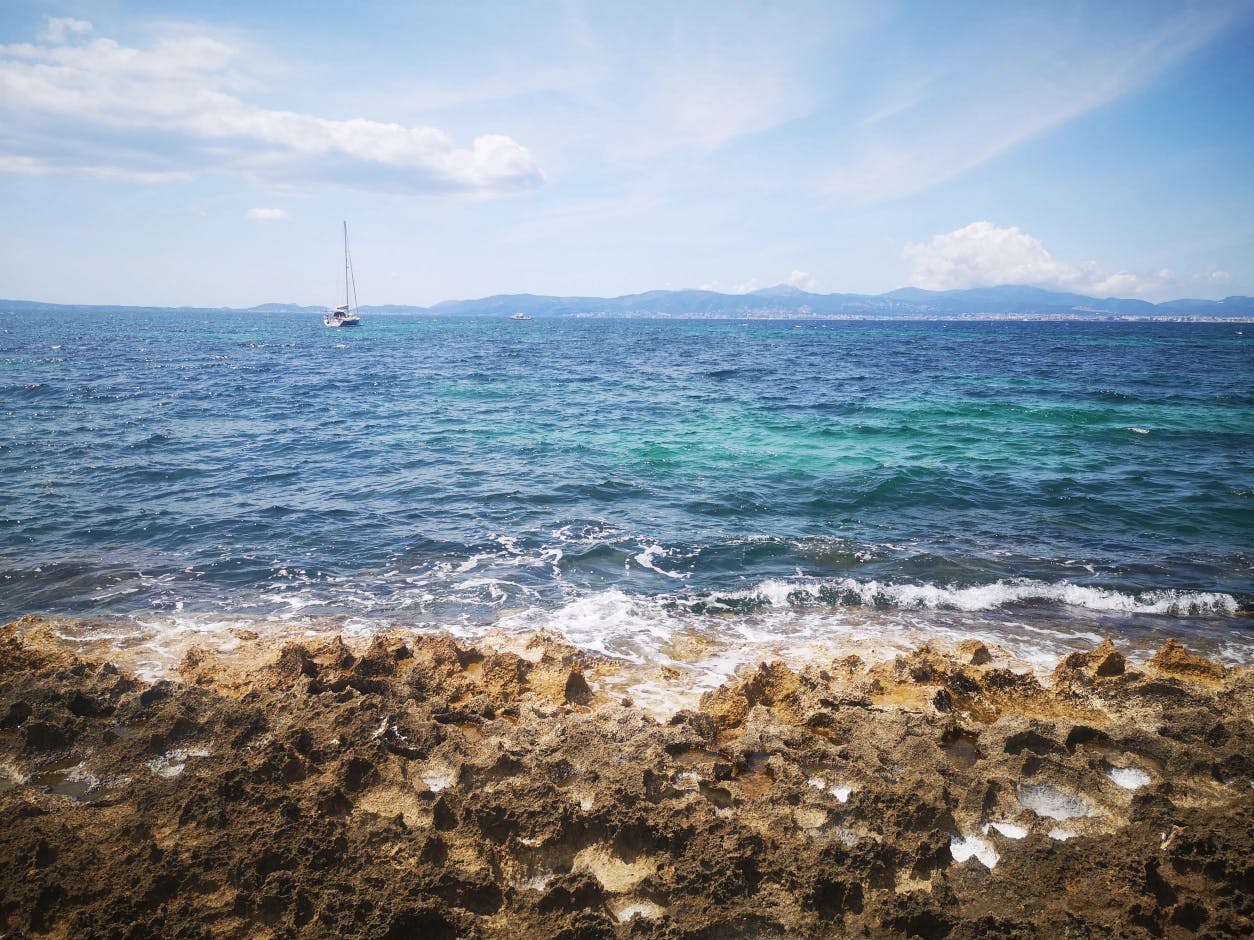
Breathe In / Breathe Out
Diving is one of the most fascinating and beautiful sports. Every open water site discovery as a freediver or scuba diver starts with a momentum of how the environment has developed for the time being.
Playa Caló de ses Lleonardes – Mallorca – Playas de Baleares
“La confiance en ses propres capacités se construit dans le temps long. Elle est un rempart à l’hostilité des grands fonds. Elle est la plus robuste des armes pour affronter l’inconnu. Mais c’est aussi un édifice friable et perméable au doute qui ruisselle et s’incruste dans nos failles intimes. La confiance se gagne, se perd, vacille, s’effondre puis se recons- truit plus forte, plus solide encore. Cette confiance en soi est le premier laissez-passer pour gagner des mètres supplémentaires.”
Extrait du livre Nature aquatique, Guillaume Nery
“Confidence in one’s own abilities is built over time. It is a rampart against the hostility of the deep sea. It is the strongest weapon to face the unknown. But it is also a crumbly edifice, permeable to doubt, which trickles down and becomes embedded in our intimate flaws. Confidence is won, lost, wavered, collapsed and then rebuilt stronger, more solid still. This self-confidence is the first pass to gain extra meters.” Excerpt from the book Aquatic Nature, author Guillaume Nery.
As a multiple world record holder in freediving and the world champion, Guillaume’s goals go well beyond the professional sport. With a perfect combination of aesthetics, performance, films and exploration, Guillaume practices his discipline like an art form — it has become his way of life.
Making a real life experience into a form of an underwater terrain mapping for Autonomous Underwater Vehicles (AUVs)- has another purpose in scientific operations. In close proximity to complex 3D environments, this approach designed by Matthew Dunbabin leverages a coarse learning-based scene range estimator from monocular images, which can filter transient objects such as fish and lighting aberrations.
Matthew Dunbabin began his career with studies in aerospace engineering. Now he is a Professor of Robotics at QUT Research and leads the autonomous marine underwater and surface vehicle programs with particular focus on the use of robot vision, adaptive control, and path planning for large-scale environmental monitoring and management applications. His research interests include vision-based navigation, adaptive sampling and path planning, and cooperative robotics.
Meanwhile Richard Fitzpatrick, cinematographer, marine biologist and managing director at Biopixels, started a new foundation together with Blancpain to support new initiatives and to build technologies that highlights and contributes to reef restoration. In this video he explains how Matthew Dunbabin’s achievements hasreached a milestone in reef monitoring, sampling and restoration process.
Coral reefs are under increasing threat from the impacts of climate change. Whilst current restoration approaches are effective, they require significant human involvement and equipment, and have limited deployment scale.
Harvesting wild coral spawn from mass spawning events, rearing them to the larval stage and releasing the larvae onto degraded reefs is an emerging solution for reef restoration known as coral reseeding.
Reconfigurable autonomous surface vehicle systems can eliminate risky diving, cover greater areas with coral larvae, measure additional data with sensory suite, and requires minimal non-technical expert training.
A key feature is an on-board real-time benthic substrate classification model that predicts when to release larvae to increase settlement rate and ultimately, survivability. The proposed robot design is reconfigurable, light weight, scalable, and easy to transport. Results from restoration deployments at Lizard Island demonstrate improved coral larvae release onto appropriate coral substrate, while also achieving 21.8 times more area coverage compared to manual methods.
Mou, Serena & Tsai, Dorian & Dunbabin, Matthew. (2022). Reconfigurable Robots for Scaling Reef Restoration.
Biopixel | Resurrecting the reef – Blancpain
By latest digital advancements for the divers community in Berlin claiming formular of Tauchtauglichkeit registration online is a simple process. My last move was been breaking into the physicist offices for appointment while most of the medical crew is gathering for nationwide protests at Federal Ministry of Health.
For anyone in last minute calls for professional training- medical check ups has reservations in queue of 7 months. Looking through anesthesiologist, cardiologist and osteopath profiles- yet diving has special category concerning more than a first aid and injury protocol. I imagine how many technical divers overcome these internal contradictions with their own questionnaire, but at the end of the day it is matter of diver’s own safety.
It happens that scuba diving fitness assessments are performed by physicians who are in no way qualified to do so, or who have completed their course a decade ago. This leads to the paradoxical and embarrassing situations where informed scuba diver knows more about the necessary examination procedure and the contraindications to be considered on individual basis.
Time is more precious than valuables, and getting medical and insurance services upon immediate response is much more reliable.
More information about the certified doctors by Die Deutsche Gesellschaft für Tauch- und Überdruckmedizin e. V. (GTÜM) https://www.gtuem.org/gtuem-taucharzt.html
Vivantes Clinic in Friedrichshain is municipal hospital in Berlin where doctors are available with more reasonable timeline. In addition to special medical emergencies such as diving accidents, they also treat smoke gas poisoning and a wide variety of diseases such as DFS, acute inner ear diseases (hearing loss), wound healing disorders or the consequences of radiation.
Emergency services in Zentrum für hyperbare Sauerstofftherapie und Tauchmedizin are available 24h. More information on webiste Zentrum für hyperbare Sauerstofftherapie und Tauchmedizin.